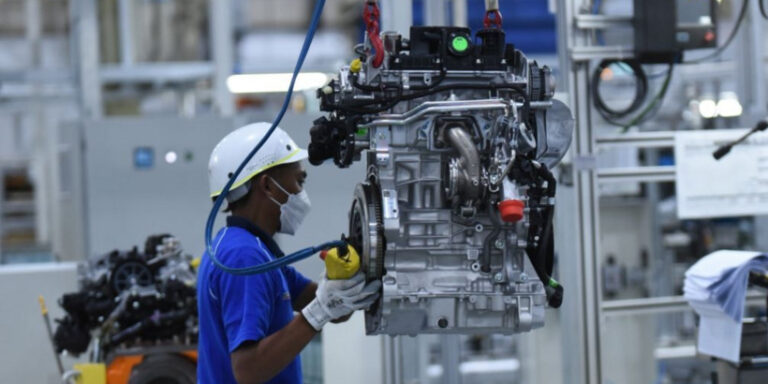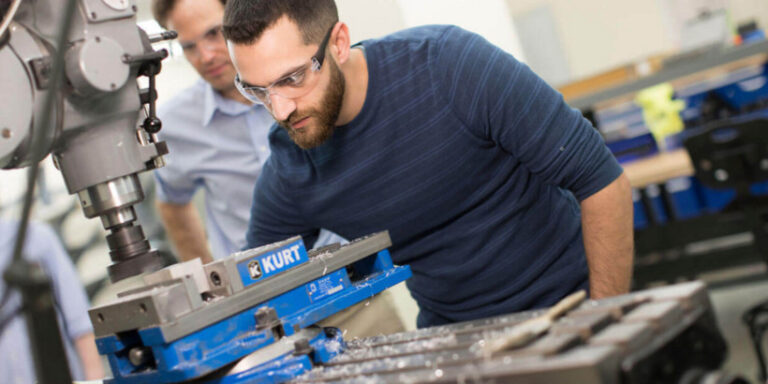Why Data Analytics Is The Key To Optimizing Your Manufacturing Process
Have you ever wondered how manufacturers produce high-quality products at a fast pace? The answer lies in data analytics.
As a manufacturing enthusiast, I’ve come to realize that the key to optimizing your manufacturing process is by analyzing data and making informed decisions based on those analyses.
Data analytics provides an opportunity for manufacturers to collect, analyze, and interpret data from various sources such as sensors, machines, and employees. With this information, they can identify inefficiencies or bottlenecks in their production processes, predict maintenance needs of equipment before it breaks down, improve product quality, reduce waste and energy consumption while increasing productivity.
Therefore, if you’re still using traditional methods to optimize your manufacturing process without leveraging data analytics tools – it’s time to reconsider! In this article, we’ll explore why investing in data analytics is crucial for any manufacturer who wants to stay competitive in today’s market.
The Benefits Of Data Analytics
Ah, the joys of manufacturing. The smell of grease and metal in the air, machines whirring away at all hours of the day…it’s enough to make you feel like a real-life Rosie the Riveter (minus the flexed biceps).
But as much as we love our industrial roots, there’s no denying that modern-day manufacturing has come a long way from its early days. And one key player in this transformation? Data analytics.
By harnessing the power of data, manufacturers can take advantage of cost savings opportunities through process automation – which means fewer manual tasks for workers and more time spent on high-value activities.
So if you’re looking to optimize your manufacturing process and stay ahead of the competition, it’s time to start taking data analytics seriously.
How To Collect And Analyze Data
Now that we know the benefits of data analytics, let’s dive into how to collect and analyze data for manufacturing process optimization.
With advanced tracking systems and data mining techniques available today, it is easier than ever before to gather valuable insights from your production lines.
To start with, set up sensors on machines and equipment to track performance metrics like uptime, downtime, cycle times, etc., which can be used to identify bottlenecks and inefficiencies in real-time.
Next, integrate this information with other relevant sources such as quality control reports or supply chain data to get a comprehensive view of your operations.
Finally, use analytical tools to visualize trends and patterns in the collected data, allowing you to make informed decisions about where improvements can be made.
By leveraging these technologies effectively, you can streamline processes and reduce costs while improving overall product quality – ultimately giving your business a competitive edge in the marketplace.
Using Predictive Analytics To Improve Efficiency
I’m really excited to explore different data sources that can help us model our manufacturing process and improve efficiency. Let’s talk about different modeling techniques we can use to get the most out of our predictive analytics.
Exploring Data Sources
Have you ever wondered how to keep track of the trends in your manufacturing process?
Well, with data analytics, you can easily monitor these trends by exploring different data sources.
By storing data from various stages of production, you can analyze patterns and identify areas where efficiency could be improved.
This is why using predictive analytics is so important – it allows manufacturers to make informed decisions based on real-time insights rather than relying on guesswork or assumptions.
So don’t wait any longer; start exploring your data sources today!
Modeling Techniques
Now that we know how data analytics can help us monitor trends in our manufacturing process, let’s dive into the next step – modeling techniques.
By using these techniques to analyze your data, you can gain even deeper insights into your production processes and identify areas of cost optimization.
Predictive forecasting is a particularly powerful tool for this purpose as it allows manufacturers to anticipate potential issues before they occur and make necessary adjustments in real-time.
With predictive models, you can also test different scenarios and evaluate their impact on efficiency, allowing you to make informed decisions about future investments or changes to your operations.
So if you want to take your data-driven decision-making to the next level, incorporating modeling techniques into your predictive analytics strategy is essential!
Leveraging Machine Learning To Streamline Production
When it comes to optimizing output in manufacturing, machine learning can be a game-changer.
By analyzing data from sensors and machines on the factory floor, algorithms can identify patterns that humans might miss.
This information can then be used to proactively schedule maintenance or adjust production parameters for maximum efficiency.
The result is less downtime, fewer defects, and greater overall productivity.
With machine learning as part of your analytics toolkit, you’ll have the insights you need to make informed decisions about your operations and stay ahead of the competition.
Gaining Insight Into Process Performance
As we learned in the previous section, machine learning is a powerful tool for streamlining production. But how do you know which areas of your manufacturing process need improvement?
That’s where data analytics comes in. By gathering and analyzing data from various stages of production, manufacturers can gain insight into their process performance and make informed decisions about optimization.
Detailed tracking allows teams to identify patterns and trends over time, while root cause analysis helps pinpoint the source of any issues that arise. With this information at their fingertips, manufacturers can make targeted improvements that lead to increased efficiency, reduced costs, and improved quality control.
To achieve this, manufacturers should gather data from multiple sources and use visualization tools to identify patterns. They should conduct root cause analysis on identified issues and continuously monitor and adjust processes based on insights gained through data analytics.
Identifying And Solving Problems Quickly
Identifying problems is the first step towards solving them, and data analytics can help to quickly identify and diagnose issues. By leveraging the power of data analytics, it’s possible to gather meaningful insights to inform effective problem-solving strategies. Once the problem has been identified and strategies have been developed, data analytics can also help to implement solutions quickly and efficiently.
Identifying Problems
Let me tell you, identifying problems in your manufacturing process is crucial.
By using data analytics, you can quickly identify areas of inefficiency and waste in your production line.
This not only saves you money but also gives you the opportunity to make process improvements that will benefit your bottom line in the long run.
Without this valuable insight provided by data analytics, it’s difficult to pinpoint where exactly your problems are occurring and how they can be solved for maximum cost savings.
So don’t underestimate the power of data analytics when it comes to optimizing your manufacturing process!
Problem-Solving Strategies
Now that we know how data analytics can help us identify problems in our manufacturing process, let’s talk about problem-solving strategies.
When it comes to solving production-related issues quickly and effectively, there are a few things to keep in mind.
First off, cost optimization is key – you want to find the most efficient solution possible without breaking the bank.
Secondly, process automation can be incredibly helpful in reducing human error and streamlining operations.
And lastly, don’t be afraid to think outside of the box when it comes to finding solutions – sometimes unconventional approaches can lead to breakthroughs.
By keeping these strategies in mind, you’ll be well-equipped to tackle any problems that arise within your manufacturing process.
Implementing Solutions
Now that we’ve discussed the problem-solving strategies for identifying and solving manufacturing issues, let’s explore how to implement solutions effectively.
Personally, I believe that adopting trends in technology can greatly aid in finding solutions faster and more efficiently. For instance, integrating systems like automation tools or real-time monitoring software can help streamline processes and minimize errors.
Additionally, it’s important to stay open-minded when exploring potential solutions – sometimes the most effective fix might not be immediately obvious.
By keeping these ideas in mind while implementing solutions, you’ll be able to tackle any production problems with confidence and efficiency.
Adopting A Data-Driven Approach To Manufacturing
Now that we understand how data analytics can help optimize the manufacturing process, let’s talk about adopting a data-driven approach. By embracing this approach, manufacturers can harness the power of their data to make informed decisions and drive continuous improvement. One way to do this is by implementing cost optimization strategies. For example, using predictive maintenance analytics to identify equipment failures before they occur can prevent costly downtime and repairs. Another strategy is process optimization, which involves analyzing production data to identify inefficiencies and areas for improvement. Through these approaches, manufacturers can improve operational efficiency, reduce costs, and ultimately increase profitability.
| Metric | Description | Importance |
|---|---|---|
| OEE | Overall Equipment Effectiveness (OEE) measures production output relative to its full potential | High |
| Scrap Rate | The percentage of defective products in the manufacturing process | Low |
| Cycle Time | The time it takes to produce one unit of product from start to finish | Medium |
| First Pass Yield | The percentage of units produced correctly without any rework or scrap involved | High |
| Downtime | The amount of time when production is stopped due to unforeseen events such as machine breakdowns or material shortages. | Low |
By utilizing a variety of metrics like those listed in our table above and combining them with advanced analytical tools, manufacturers can gain valuable insights into their operations. These insights enable them to take proactive steps towards improving their processes rather than reacting after an issue has already occurred. In addition, a data-driven approach allows for real-time monitoring of key performance indicators (KPIs), providing visibility into potential issues before they become major problems. With so much at stake in today’s competitive manufacturing landscape, incorporating data analytics into your business strategy is essential for success.
Conclusion
In conclusion, data analytics is the key to unlocking your manufacturing process’s full potential. With its ability to collect and analyze vast amounts of information, you can gain insight into every aspect of production.
Like a magnifying glass revealing details hidden from plain sight, data analytics exposes inefficiencies that may have gone unnoticed before. By using predictive analytics and machine learning algorithms, you can streamline the entire manufacturing process, reducing downtime, increasing productivity, and optimizing resource allocation.
It’s like having a well-oiled machine running at peak performance with every gear turning in perfect harmony. With real-time monitoring and analysis capabilities, problems can be identified and solved quickly before they escalate into costly issues.
It’s like catching a small crack in the dam before it turns into a catastrophic flood. In short, adopting a data-driven approach to manufacturing is like having an eagle-eye view of your operations seeing everything clearly and knowing exactly what needs attention.
So why not take advantage of this powerful tool today? Start embracing data analytics and watch as your manufacturing process becomes more efficient than ever before!






